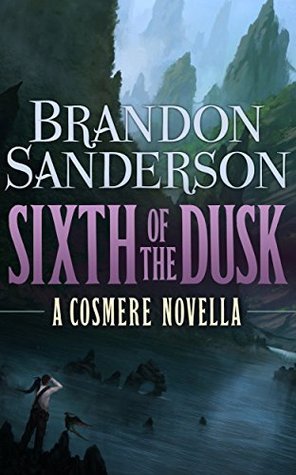Sixth of the Dusk is Brandon Sanderson's latest novella. As a huge fan of Sanderson's work, I bought this without even reading up on what it's about. If it's Sanderson, it has to be good. And indeed, I was not disappointed. It is short, as it's a novella, so my review will just present a basic overview of what it's about. One of the great aspects of reading a Sanderson novel is discovering the world. I mildly spoil that, but not too much and certainly avoid direct spoilers concerning the story and the mysteries of the world.
Read on for my full review.
Many of Sanderson's novels can be placed in a greater universe beyond that of each individual book. This is the Cosmere. A person with advanced technology or special powers could travel from Scadrial, the world of Mistborn, to Sel, the world of Elantris, or Roshar, the world of The Stormlight Archive, and to the other worlds of the Cosmere. In practice, the Cosmere has very little to do with the story in each book, and the characters and plots are completely disconnected. It's just a curious thing to do that may end up relevant in the future.
Sixth of the Dusk is set in one of the Cosmere worlds, First of the Sun. The story itself revolves around a set of tropical islands, the Pantheon, and the people who live there and take care of them and their birds. Dusk is a trapper living in the largest of the islands, Patji, along with his two companion birds, Sak and Kokerlii. The world is changing, though, thanks to contact with the Ones Above, presumably space-faring people of one or more of the Cosmere worlds. A sort of Prime Directive prevents trading, but contact has happened and the people who live in the "homeisles" beyond the Pantheon are interested in expanding, particularly when it comes to the Aviar.
The Aviar are special birds that grant talents or powers to their owners. They can be found only in the Pantheon islands and are highly sought after. Trappers like Dusk raise and care for them to later sell. Everything changes when Dusk finds others on his island.
Overall, this is a short novella with only a handful of characters and a straightforward plot. Despite this, Sanderson manages to create a sense of mystery to the Aviar, the islands, and the Ones Above that drives the story. As always, Sanderson is a master of magic and he provides some partial, yet fulfilling, answers to how the magic of this world works. The book ends rather open-ended, letting the reader imagine what will happen in the future. Some of the secrets also spark my curiosity (ie, why Aviar and not humans?). I hope that Sanderson revisits the First of the Sun world as it sounds very cool (a distinct Polynesian vibe) and feels like the magic could be more fleshed out.

No comments:
Post a Comment
Note: Only a member of this blog may post a comment.